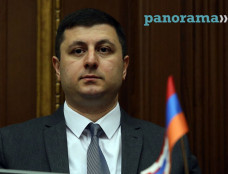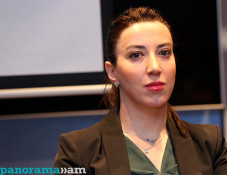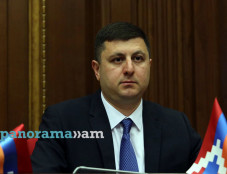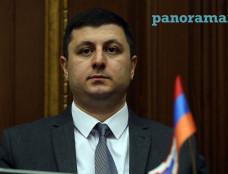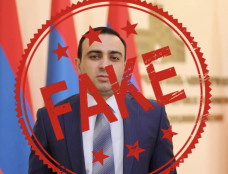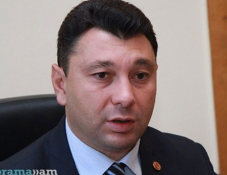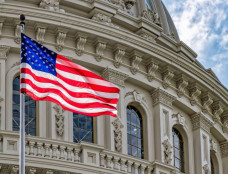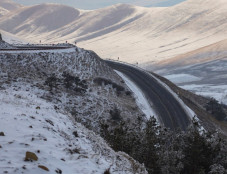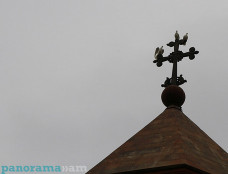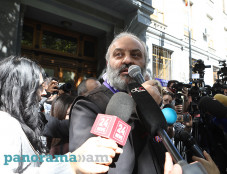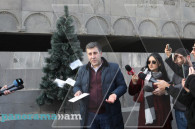Clinton’s Visit to Genocide Monument Necessary but not Sufficient
During her visit to Armenia on July 5, U.S. Secretary State Hillary Clinton placed a wreath at the Armenian Genocide Monument at Tsitsernakaberd in Yerevan. Regrettably, however, the U.S. Embassy in Armenia issued a press release describing the visit as "private." By using such a characterization, U.S. officials were trying to preempt any backlash from the Turkish government.
In my opinion, the State Department mishandled Secretary Clinton’s visit to the Armenian Genocide Monument. Here are the reasons why:
•There was no need to downplay the visit by characterizing it as "private," since such visits are standard procedure for foreign dignitaries visiting Armenia.
•Paying a visit to the Genocide Monument does not necessarily imply recognition of the Armenian Genocide, as all previous and current U.S. Ambassadors have visited this site every April 24.
•Secretary Clinton’s visit to the Genocide Monument could not have been described as "private," since it was a part of her "official" visit to Armenia.
•The characterization of the visit as "private" was contradicted by the fact that the ribbons on the wreath she laid at the Genocide Monument carried the inscription: "From Secretary of State Hillary Rodham Clinton."
•Clinton’s visit the day before to the "Alley of the Martyrs" in Baku was not described as "private," creating the disturbing impression that U.S. interests in Azerbaijan’s oil weigh heavier than its humanitarian concerns for victims of genocide.
•Another double standard was Clinton not allowing any Armenian government officials to accompany her to the Genocide Monument in Yerevan, while she was accompanied to the "Alley of Martyrs" in Baku by a Deputy Minister of Azerbaijan!
•Clinton permitted neither the international press traveling with her nor the local Armenian media, except Armenian Public TV, to report on her visit to the Genocide Monument. Her action undermines her advocacy for media freedom.
•There was no reason for Secretary Clinton to be coy about Genocide recognition, since Pres. Reagan had acknowledged it in 1981, and the U.S. House of Representatives had recognized it in 1975 and 1984.
Even though the State Department downgraded Secretary Clinton’s visit to the Monument, Armenian officials did their best to publicize it as much as possible! This time they acted more decisively than last May, when Mevlut Cavusoglu -- Turkish President of Council of Europe’s Parliamentary Assembly -- refused to visit the Genocide Monument. They insisted that the Secretary add to her itinerary a stop at the Genocide Monument. They then arranged for Armenian Public TV and other TV stations to repeatedly air the video of Clinton’s July 5 visit to the Monument.
In addition, the website of the State-owned Armenian Genocide Museum prominently featured Clinton’s visit by displaying photos of her wreath with ribbons that carried a visible inscription of her name and title, and an authentic medal issued by the American Near East Relief Committee that Museum Director Hayk Demoyan presented her. Pointing across the Turkish border, Demoyan told Secretary Clinton that Mount Ararat is "a symbol of Armenia." In addition to explaining the basic facts of the Armenian Genocide, Demoyan told her that the graves of heroes fallen in Artsakh (Karabagh) were located near the Monument, since Armenians consider that war to be a continuation of the Armenian Genocide. The Secretary was also given a historical photo in which Armenian children in the American orphanage of Alexandropol (Gumri) were standing in formation that spelled out the words: "AMERICA, WE THANK YOU."
Clinton’s visit was both praised and criticized by Armenian-American organizations. The Armenian National Committee of America took Clinton to task for her "secret" visit to the Genocide Monument, while the Armenian Assembly of America commended her for the visit. Former U.S. Ambassador to Armenia, John Evans, told The California Courier that "Clinton’s visit was a small, but positive step forward." The last Secretary of State to have visited Armenia was James Baker in 1992, who did not, however, make a stop at the Genocide Monument.
In my view, Secretary Clinton should be commended for making such a positive gesture, but also blamed for going to such lengths to downplay her visit to the Genocide Monument. Why was she so concerned about offending Turks who have brazenly undermined every major U.S. foreign policy initiative in recent months?
Unfortunately, Secretary Clinton, Vice President Biden and Pres. Obama have drifted far away from their campaign promises to recognize the Armenian Genocide! Clinton’s brief stop at the Genocide Monument on July 5 is a welcome first step that fell short of her solemn commitment to support recognition of the Armenian Genocide.
By Harut Sassounian
Publisher, The California Courier
Newsfeed
Videos






